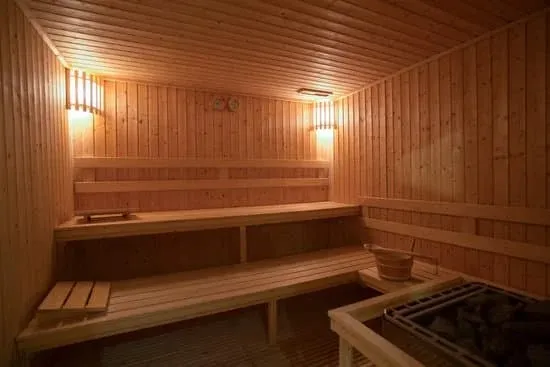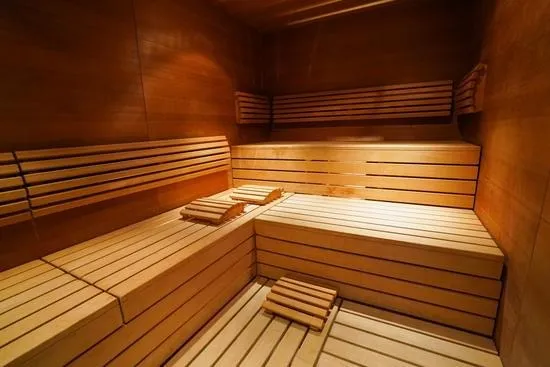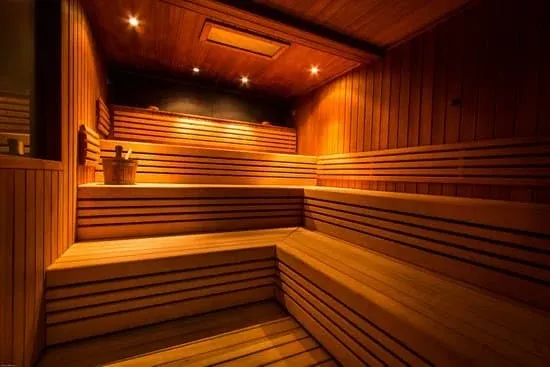So you've decided to bring the wellness benefits of sauna therapy into your home. Smart move. But when you start researching, the options can feel overwhelming. Traditional or infrared? One person or two? Wood or hemlock? Trust me, I get it.
After eight years of exploring wellness solutions for my family and countless conversations with Ease Wellness clients, I've learned that choosing an indoor sauna doesn't have to be complicated. You just need to understand a few key factors. Let's break it all down together.
Why an Indoor Sauna Makes Sense
Before we dive into the details, let's talk about why this investment matters. When our first child developed neurological issues, we started exploring alternative wellness approaches. Regular sauna therapy became a cornerstone of our family's health transformation.
The benefits go beyond just feeling good. Research from the University of Eastern Finland shows that people who use saunas 4-7 times per week have significantly lower risks of cardiovascular disease and all-cause mortality. That's not just wellness talk—that's hard science backing up what traditional cultures have known for centuries.
Traditional vs. Infrared: Understanding the Basics
This is usually the first decision point, and honestly, both types have their place. Let me break down what makes each one special.
Traditional Saunas
Traditional Finnish saunas heat the air around you, typically reaching 150-195°F. They use either electric heaters or wood-burning stoves with rocks that you can pour water on to create steam (called löyly in Finnish). This is the sauna experience that's been perfected over thousands of years.
Pros:
- Authentic, intense heat experience
- Option to add steam for humidity control
- Longer lifespan (20-30+ years with proper care)
- That unmistakable traditional sauna feel
Cons:
- Higher energy consumption
- Longer warm-up time (30-45 minutes)
- Usually requires dedicated electrical circuits
- More expensive upfront cost

Infrared Saunas
Infrared saunas use infrared light panels to directly heat your body at lower temperatures (120-140°F). The infrared waves penetrate your tissues, warming you from the inside out. It's a gentler but still effective approach.
Pros:
- Lower operating temperatures (better for heat-sensitive folks)
- Quick warm-up time (10-15 minutes)
- More energy-efficient
- Some models plug into standard outlets
- Easier installation
Cons:
- Different experience than traditional saunas
- Heating panels may need replacement after 10-15 years
- No steam option
For my family, we started with infrared because it's gentler and our kids could tolerate it better. Many health practitioners recommend infrared for people new to sauna therapy.
Sizing Your Indoor Sauna
Here's where things get practical. The size you need depends on three factors: how many people will use it, your available space, and your budget.
| Capacity | Typical Dimensions | Best For |
|---|---|---|
| 1 Person | 3' x 3' or 3' x 4' | Personal use, tight spaces |
| 2 Person | 4' x 4' to 5' x 6' | Couples, most popular size |
| 3-4 Person | 6' x 6' to 6' x 8' | Families, social use |
Pro tip: Measure your space carefully, including ceiling height (you'll need at least 6.5-7 feet). Don't forget to account for the door swing and ventilation clearance.
Installation Considerations
This is where reality meets dreams. Installation complexity and cost vary significantly by sauna type.
Portable Saunas
These are the easiest. Literally plug and play. Most fold up for storage and use standard 120V outlets. Perfect if you're renting or want to test the waters before committing to a permanent installation.
Infrared Saunas
Small 1-2 person units often plug into standard outlets. Larger models might need a dedicated 240V circuit. Assembly is usually DIY-friendly with basic tools, though some people hire a handyman to be safe. Budget 2-4 hours for assembly.
Traditional Saunas
These almost always require professional electrical work—we're talking 240V/40-60 amp dedicated circuits. You'll need a licensed electrician, and costs typically run $500-$2,000 depending on your existing setup and local codes. Prefab units can be assembled in 4-8 hours with help, or you can hire pros for $500-$1,500 more.
Whatever you choose, check with your local building department about permits. Rules vary by location, but it's better to know upfront than deal with issues later.
Wood Types and Materials
The wood matters more than you might think. It affects durability, aesthetics, and even how the sauna feels during use.
Popular choices:
- Cedar: Naturally resistant to moisture and insects, beautiful aroma, most popular choice
- Hemlock: Light color, odorless, smooth texture, budget-friendly
- Basswood: Hypoallergenic, lightweight, stays cool to the touch
- Nordic Spruce: Traditional choice, excellent heat retention
We went with cedar in our home sauna because I love the natural aroma. It's like aromatherapy built right into the experience.
Budget Breakdown
Let's talk money. Indoor saunas represent a real investment, but here's how to think about the costs:
Initial Purchase:
- Portable saunas: $200-$600
- 1-2 person infrared: $1,000-$3,000
- 3-4 person infrared: $3,000-$6,000
- Traditional prefab: $3,000-$10,000
- Custom traditional: $5,000-$15,000+
Installation Costs:
- Portable: $0 (DIY)
- Infrared: $0-$500 (mostly DIY, possible electrical work)
- Traditional: $1,000-$3,000 (electrical + assembly)
Operating Costs:
- Portable: $3-8/month
- Infrared: $5-15/month
- Traditional: $15-30/month
Here's the thing though: compared to a gym membership ($30-100/month) or regular spa visits ($50-100 per session), a home sauna pays for itself in 2-4 years. Plus, you can use it whenever you want, in complete privacy.
Key Features to Look For
When you're shopping, here are the must-haves and nice-to-haves:
Essential Features:
- Quality wood construction with proper ventilation
- Reliable heating element with adjustable temperature
- Safety features (automatic shutoff, overheat protection)
- Good warranty (at least 5 years on major components)
- Proper insulation for energy efficiency
Nice-to-Have Features:
- Chromotherapy (colored light therapy)
- Built-in audio system
- Digital controls with presets
- Ergonomic backrests
- Glass doors or windows
Top Mistakes to Avoid
Learn from others' mistakes (including some of my own):
Buying too small: If you're debating between sizes, go bigger. You'll appreciate the extra space, especially for stretching or lying down.
Ignoring electrical requirements: Confirm your home can handle the power needs before purchasing. Nothing worse than buying a sauna you can't use.
Forgetting about ventilation: Saunas need proper airflow. Installing in a tiny closet without ventilation is asking for problems.
Skipping the warranty research: A cheap sauna with a 1-year warranty might cost more in the long run than a quality unit with 10-year coverage.
Not considering future needs: Kids grow up, lifestyles change. Think about your 5-year plan, not just today's needs.
Making Your Final Decision
Here's my advice after helping dozens of people through this process: start with your non-negotiables. What can't you compromise on? Space? Budget? Specific health needs?
For most people, I recommend starting with a 2-person infrared sauna in the $1,500-$3,000 range. It's the sweet spot of affordability, ease of installation, and daily usability. You can always upgrade later if you fall in love with sauna therapy (and trust me, you probably will).
If you're serious about authentic sauna culture and have the space and budget, a traditional sauna is unmatched. There's something special about that intense heat and the ritual of throwing water on hot rocks.
If you're not sure yet or have space constraints, grab a portable unit for $300-500. Use it for a few months to see if sauna therapy fits your lifestyle before making a bigger investment.
FAQs About Indoor Saunas
For solo use, a 3x3 or 3x4 foot sauna works perfectly. If you want to share with a partner, go for a 4x4 to 5x6 foot unit. For families, consider 6x6 feet or larger. Remember to measure your space carefully, including doorways if you're bringing in a prefab unit.
Infrared saunas typically cost $5-15 per month for regular use (3-4 sessions weekly). Traditional saunas cost $15-30 monthly due to higher power requirements. Portable saunas are the most economical at $3-8 per month.
It depends on your location and sauna type. Traditional saunas requiring significant electrical work usually need permits. Portable and some plug-in infrared saunas typically don't. Check with your local building department and homeowners association before installation.
Ready to Take the Next Step?
Choosing an indoor sauna is a personal decision that depends on your unique situation. The good news? There's never been a better time to invest in home wellness. The options are plentiful, the technology is proven, and the health benefits are well-documented.
If you're still unsure about which direction to go, reach out to us. I'm happy to talk through your specific situation and help you find the perfect fit. At the end of the day, the best indoor sauna is the one you'll actually use regularly.
Your wellness journey deserves the right tools. An indoor sauna might just be the missing piece that transforms your daily routine into something truly restorative.
References
- Laukkanen T, et al. "Sauna bathing is inversely associated with dementia and Alzheimer's disease." University of Eastern Finland, Age and Ageing, 2017.
- Hussain J, Cohen M. "Clinical Effects of Regular Dry Sauna Bathing." Evidence-Based Complementary and Alternative Medicine, 2018.
- Mayo Clinic Staff. "Infrared saunas: What are the benefits?" Mayo Clinic, 2023.
- Harvard Health Publishing. "Saunas and Your Health." Harvard Medical School, 2021.





